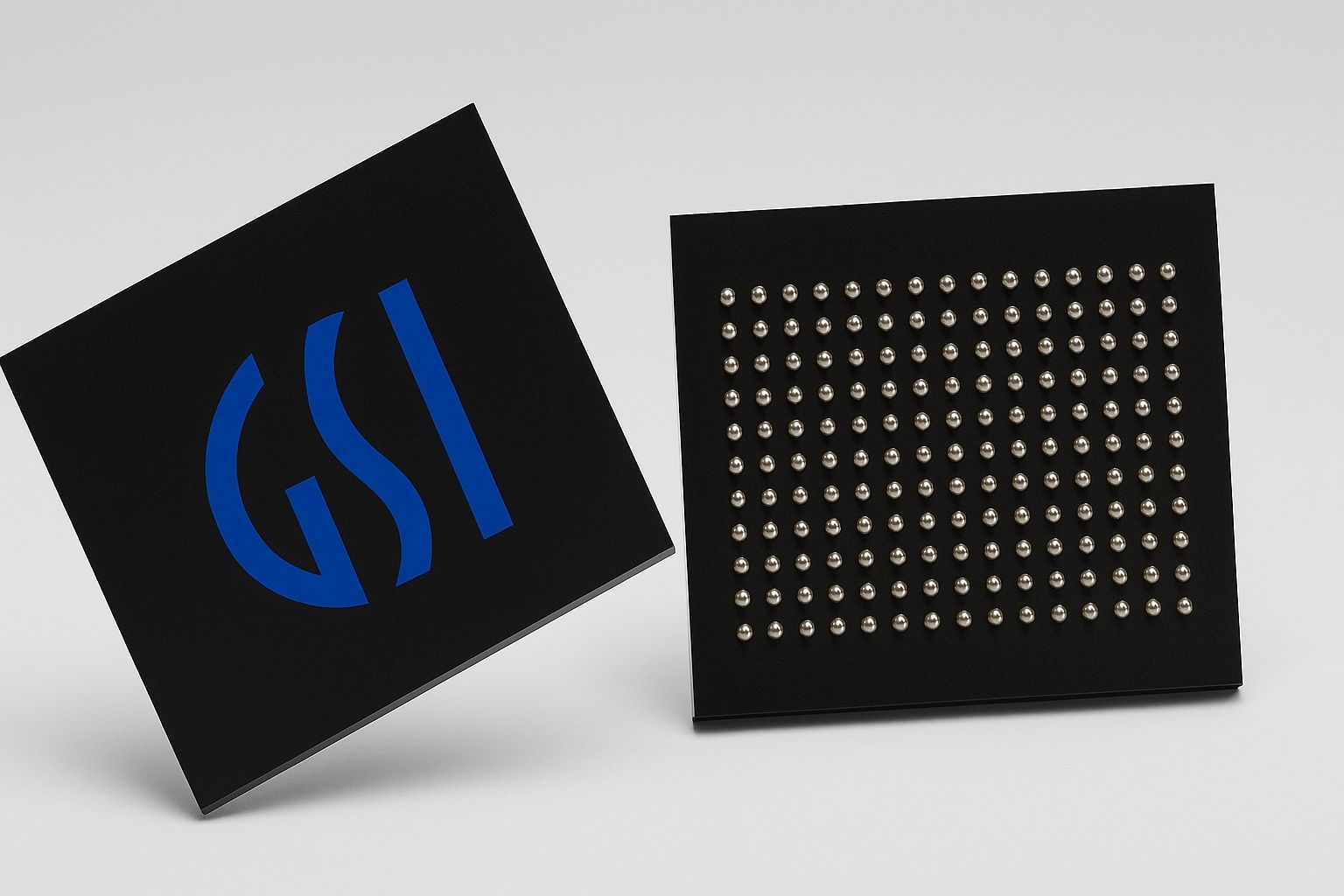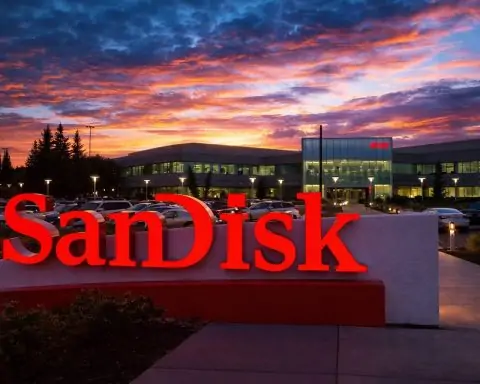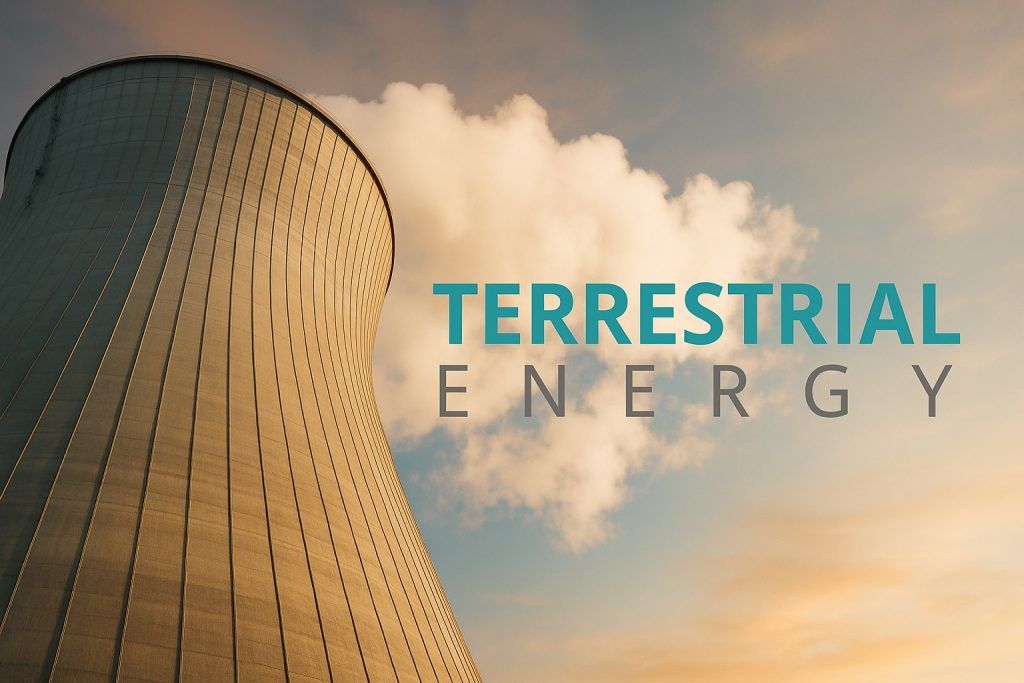- GSI’s new APU (compute-in-memory chip) matches NVIDIA A6000 GPU throughput on large-scale AI tasks while using “over 98% lower energy” [1]. It also accelerates retrieval tasks ~5× faster than standard CPUs (up to 80% shorter processing time) [2].
- Cornell validation: The findings come from a Cornell-led study (MICRO ’25) that rigorously benchmarked GSI’s Gemini-I APU on Retrieval-Augmented Generation (RAG) workloads [3]. GSI’s CEO Lee-Lean Shu hailed the results: it “confirms…compute-in-memory has the potential to disrupt the $100 billion AI inference market,” delivering “GPU-class performance at a fraction of the energy cost” [4].
- Energy efficiency: By integrating memory and compute, the APU achieves 50–118× lower energy use than a GPU (per the research) [5]. This addresses a critical need: “hardware that consumes less power will reduce AI’s appetite for energy,” notes Nature, highlighting the urgency of green AI hardware [6].
- Industry context: GSI’s chip targets edge AI (defense, drones, IoT) where power is scarce. Analysts estimate the edge-AI market will hit ~$57 billion by 2030 [7]. Other firms are moving similarly: e.g., MediaTek’s new Dimensity CPU features a compute-in-memory NPU that cuts always-on AI power by ~42–56% [8].
- Stock reaction: NASDAQ:GSIT shares exploded ~200% on Oct. 20, 2025 – jumping from about $5 to ~$15 intraday (trading around $14.80 by mid-morning) [9]. This reflects investor excitement over the energy-saving AI breakthrough.
- Analysts caution: Despite the hype, financial metrics remain shaky. GSI’s revenues are small (≈$22.1M) and falling (3-year growth −16.3%), with net margins deeply negative (~−63%) [10]. Some forecasts even predict the stock could tumble after this spike (CoinCodex projects a drop to ~$5/share soon [11]). Investors note that while new AI deals stir opportunity, they also carry speculative risk [12].
Breakthrough Performance Confirmed by Cornell
GSI Technology’s Oct. 20 announcement unveiled results from a Cornell University study that benchmarked GSI’s Gemini-I APU against conventional hardware. The Cornell team ran real AI workloads (large-scale RAG) on GSI’s in-memory chip, a standard multi-core CPU, and a high-end Nvidia GPU (A6000). The result: the Gemini-I APU achieved comparable throughput to the Nvidia A6000 GPU [13]. Crucially, it did so while consuming “over 98% lower energy” than the GPU on large datasets [14]. In concrete terms, the study found the APU used roughly 1–2% of the energy a GPU requires [15] [16]. This massive efficiency gain underpins GSI’s key claim.
By contrast, on traditional CPUs the APU was far faster. GSI reports the APU shortened retrieval-processing time by up to 80% versus CPUs [17], meaning tasks ran over 5 times faster. CEO Lee-Lean Shu emphasized these findings: “compute-in-memory has the potential to disrupt the $100 billion AI inference market,” he said [18]. “The APU delivers GPU-class performance at a fraction of the energy cost,” thanks to its memory-centric architecture [19]. These statements, directly from the press release, indicate GSI’s confidence in the tech. The Cornell authors also introduced new optimization methods to fully leverage the memory-compute integration, underscoring that this isn’t a one-off win but a platform for future improvement [20] [21].
Why Compute-in-Memory Matters
Traditional AI chips (CPUs/GPUs) separate memory and computation, causing huge data transfers and power draw. Compute-in-memory (CIM) co-locates processing within the memory arrays to eliminate that bottleneck. As Nature editors note, AI’s energy hunger is a growing crisis, and “hardware that consumes less power will reduce AI’s appetite for energy” [22]. The Gemini I APU exemplifies this approach with SRAM-based “Associative Processing Units.” It essentially performs dot-product and search operations directly in SRAM, using far less energy per operation.
The Cornell study’s detailed results confirm the promise of CIM hardware. They report that GSI’s CIM device “matches the performance of an NVIDIA A6000 GPU for RAG while being significantly more energy-efficient (54.4×–117.9× reduction)” [23]. In practical terms, the APU could handle AI inference tasks with roughly 2% of the GPU’s power draw. Such efficiency could be transformative: data centers and edge systems running hundreds of GPUs could cut power needs by orders of magnitude.
This concept is gaining traction beyond GSI. For example, MediaTek’s recently announced Dimensity 9500 mobile chip includes a “Super Efficient” NPU that uses CIM techniques. MediaTek claims this core runs always-on AI (e.g. noise cancellation, sensor processing) with about 42–56% less power than before [24]. The vision is the same: offload small AI tasks to ultra-low-power hardware. In the smartphone realm, these CIM NPUs let phones keep AI assistants and vision features running 24/7 without draining the battery.
Market Impact and Expert Views
GSI is a tiny player in semiconductors (market cap ~$148M [25]), so big gains are needed to make an impact. Yet the company is strategically focused on defense and aerospace (high-margin, power-constrained markets). Industry analysts note that the Edge AI chip market could reach $56–57 billion by 2030 [26], driven by 5G/IoT growth and government spending. GSI’s latest Gemini-II APU (already taped out) is explicitly aimed at embedded, low-latency AI use cases like autonomous drones and satellites [27]. AInvest notes that GSI’s partners include defense contractors for satellite/drone imaging, aligning with this edge-AI niche [28].
On the investment side, GSI’s stock (NASDAQ:GSIT) leapt on the news. Market data showed GSIT up ~191% mid-session on Oct 20 (trading around $14.80 as of 10:02 a.m.) [29]. Traders cited the surprise of such efficiency claims. However, experts urge caution. GSI’s financials are weak: annual revenue ≈$22.1 million (down over 16% in 3 years) and net losses with margins around –63% [30]. CoinCodex, a technical forecasting site, even projects the stock could quickly retrace – predicting a drop to about $5.08 within days [31]. Indeed, thinly traded microcaps often see dramatic swings on news.
Moreover, some analysts draw parallels with other defense-AI stocks. Tech media notes that surging defense-AI rallies (e.g. BigBear.ai’s recent 22% gains on Pentagon deals) are a double-edged sword [32]. “Coverage of growing defense AI deals highlights both opportunity and speculative hype,” warns one report [33]. In other words, while the tech is exciting, conversion into profits and adoption takes time. GSI’s CEO echoed this balanced view by outlining a roadmap (Gemini-II and a future “Plato” chip) targeting lower power and higher throughput [34] [35], indicating the company is thinking beyond today’s press release.
Outlook and Analyst Forecasts
Looking ahead, GSI will report Q2 fiscal 2026 earnings on Oct 30, which will shed light on real demand for its chips. The press release and study are positive signals, but much depends on execution. For now, technical indicators are mixed: sentiment on the stock is bullish, but volatility is extreme. CoinCodex’s model marked GSIT as “very high volatility” and advised a short position because the price surge was unsustainable [36].
Even so, the core achievement is clear: GSI’s compute-in-memory APU demonstrably breaks the GPU power wall. If the technology scales, it could force competitors to rethink AI chip design. As one industry analyst said about similar efforts, managing power often matters more than raw benchmark scores. The question is whether GSI can turn this innovation into volume sales. For investors and engineers alike, this news marks a milestone: an associative-memory AI chip has passed a real-world test, and for the first time, GPU-class AI performance may be available at data-center wattage.
Sources: GSI Technology press release (Oct 20, 2025) [37] [38]; Cornell APU study (Micro ’25) [39]; GuruFocus, StockAnalysis, CoinCodex market data [40] [41] [42]; TechStock² (TS2.tech) chip analyses [43] [44] [45]; Nature (AI energy article) [46].
References
1. www.globenewswire.com, 2. www.globenewswire.com, 3. www.globenewswire.com, 4. www.globenewswire.com, 5. arxiv.org, 6. www.nature.com, 7. www.ainvest.com, 8. ts2.tech, 9. stockanalysis.com, 10. www.gurufocus.com, 11. coincodex.com, 12. www.ainvest.com, 13. www.globenewswire.com, 14. www.globenewswire.com, 15. arxiv.org, 16. www.globenewswire.com, 17. www.globenewswire.com, 18. www.globenewswire.com, 19. www.globenewswire.com, 20. arxiv.org, 21. www.globenewswire.com, 22. www.nature.com, 23. arxiv.org, 24. ts2.tech, 25. www.gurufocus.com, 26. www.ainvest.com, 27. www.ainvest.com, 28. www.ainvest.com, 29. stockanalysis.com, 30. www.gurufocus.com, 31. coincodex.com, 32. www.ainvest.com, 33. www.ainvest.com, 34. www.stocktitan.net, 35. www.globenewswire.com, 36. coincodex.com, 37. www.globenewswire.com, 38. www.globenewswire.com, 39. arxiv.org, 40. www.gurufocus.com, 41. stockanalysis.com, 42. coincodex.com, 43. ts2.tech, 44. www.ainvest.com, 45. www.ainvest.com, 46. www.nature.com







